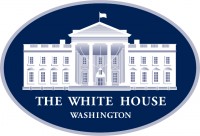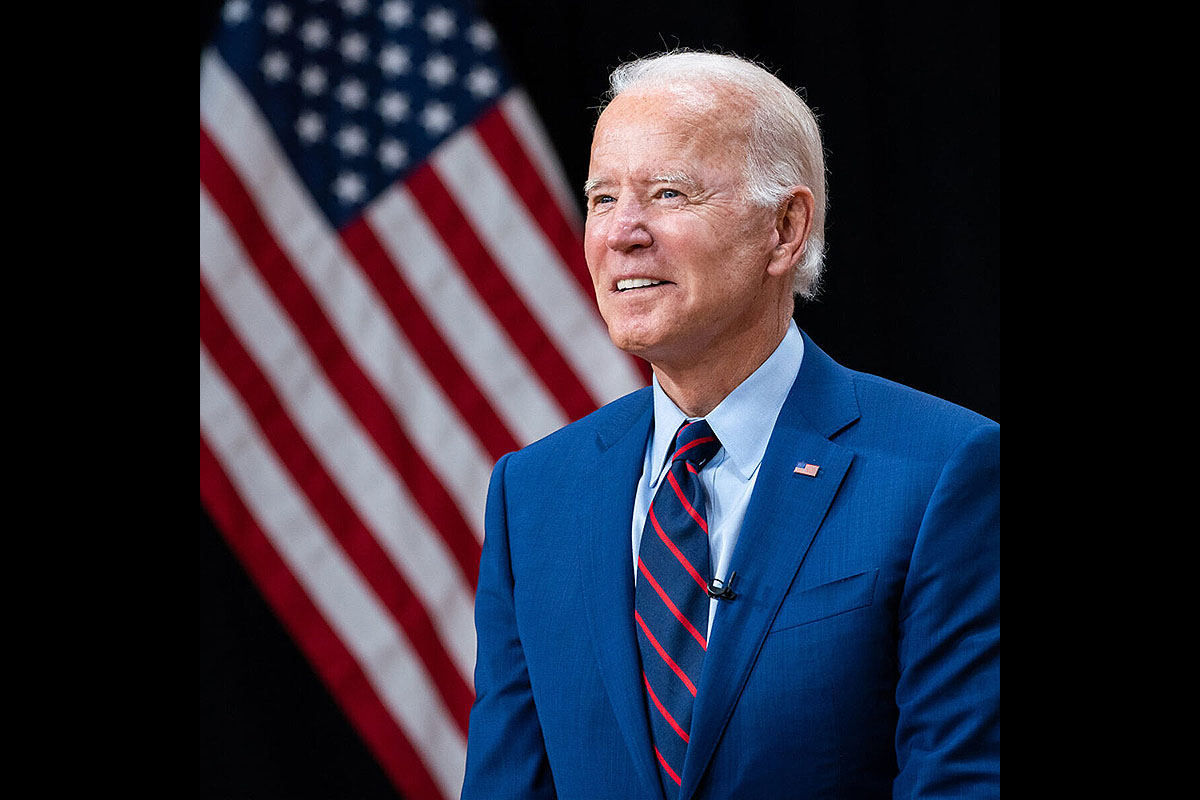 Washington, D.C. – Across America, a strong economic recovery is taking hold. Since President Biden took office, more than 3 million jobs have been created—600,000 a month on average. The American Rescue Plan is working, jumpstarting the economy and getting Americans back to work.
Washington, D.C. – Across America, a strong economic recovery is taking hold. Since President Biden took office, more than 3 million jobs have been created—600,000 a month on average. The American Rescue Plan is working, jumpstarting the economy and getting Americans back to work.
And critically, over two-thirds of adults are vaccinated, with our most vulnerable populations protected at even higher rates. In every state, jobs are up and American workers and families are looking ahead to a brighter future.

Shortly after taking office, the Joe Biden-Kamala Harris Administration extended the foreclosure moratorium and mortgage forbearance enrollment period for homeowners with government-backed mortgages to provide relief to struggling homeowners.
On June 2th, the Administration extended the foreclosure moratorium for a final, additional month until July 31st, 2021, and the forbearance enrollment window through September 30th, 2021, and provided up to three months of additional forbearance for certain borrowers.
These actions were taken by three federal agencies that back mortgages – the Department of Housing and Urban Development (HUD), Department of Veterans Affairs (VA), and Department of Agriculture (USDA). The Federal Housing Finance Agency (FHFA) provided similar relief for mortgages backed by Fannie Mae and Freddie Mac.
This helped ensure that American families did not lose their homes during the pandemic. Those policies prevented foreclosures and allowed some homeowners with government-backed loans to pause their mortgage payments for up to eighteen months. Nearly 7.2 million American households took advantage of forbearance options.
Thanks in part to President Joe Biden’s strategy to get Americans vaccinated and the economy back on track, the number of American households in forbearance has fallen by more than 50% from its pandemic peak. Today, approximately 1.75 million Americans remain in forbearance.
In order to ensure a stable and equitable recovery from the disruptions of the COVID-19 Coronavirus pandemic and prepare for homeowners to exit mortgage forbearance, the Biden-Harris Administration is taking action to keep Americans in their homes and support a return to a more stable housing market.
Specifically, the Biden-Harris Administration is:
Offering Borrowers Loan Modifications and Payment Reductions that Will Help Them Stay in Their Homes
With over 160 million Americans fully vaccinated and every American offered the opportunity to get vaccinated, along with an improving economy and more Americans getting back to work, many homeowners exiting mortgage forbearance are returning to their pre-pandemic earnings and are no longer facing financial hardship associated with the pandemic. For homeowners who can resume their pre-pandemic monthly mortgage payment and where agencies have the authority, agencies will continue requiring mortgage servicers to offer options that allow borrowers to move missed payments to the end of the mortgage at no additional cost to the borrower.
However, many homeowners will need deeper assistance due to pandemic-related income loss. For example, due to the economic crisis caused by the pandemic, some homeowners are earning less than they were before the pandemic. Homeowners with government-backed mortgages that have been negatively impacted by the pandemic will now receive enhanced assistance, especially if they are looking for work, re-training, having trouble catching up on back taxes and insurance, or are continuing to experience hardship for another reason.
The new steps the Department of Housing and Urban Development (HUD), Department of Agriculture (USDA), and Department of Veterans Affairs (VA) are announcing will aim to provide homeowners with a roughly 25% reduction in borrowers’ monthly principal and interest (P&I) payments to ensure they can afford to remain in their homes and build equity long-term. This brings options for homeowners with mortgages backed by HUD, USDA, and VA closer in alignment with options for homeowners with mortgages backed by Fannie Mae and Freddie Mac.
Specifically, where agencies have the authority and depending on homeowners’ financial conditions, agencies will require or encourage mortgage servicers to offer borrowers new payment reduction options to help them remain in their home.
- HUD: The Federal Housing Administration (FHA) announced enhanced loss mitigation tools and simplified a COVID-19 Recovery Modification to help homeowners with FHA-insured mortgages who have been financially impacted by the COVID-19 pandemic. These options will offer borrowers appropriate relief while preserving flexibility for future crises. FHA will require mortgage servicers to offer a no cost option to eligible homeowners who can resume their current mortgage payments. For all borrowers that cannot resume their monthly mortgage, HUD will enhance servicers’ ability to provide all eligible borrowers with a 25% P&I reduction. Based on recent analyses, the Administration believes that the additional payment reduction offered to struggling borrowers will result in fewer foreclosures. To achieve those goals, HUD will implement the following options over the next few months:
- COVID-19 Recovery Standalone Partial Claim: For homeowners who can resume their current mortgage payments, HUD will provide borrowers with an option to continue these payments by offering a zero interest, subordinate lien (also known as a partial claim) that is repaid when the mortgage insurance or mortgage terminates, such as upon sale or refinance;
- COVID-19 Recovery Modification: For homeowners who cannot resume making their current monthly mortgage payments, the COVID-19 Recovery Modification extends the term of the mortgage to 360 months at market rate and targets reducing the borrowers’ monthly P&I portion of their monthly mortgage payment by 25 percent. This will achieve significant payment reduction for many struggling homeowners by extending the term of the mortgage at a low interest rate, combined with a partial claim, if partial claims are available.
These options augment additional COVID protections HUD published last month. These included the foreclosure moratorium extension, forbearance enrollment extension, and the COVID-19 Advance Loan Modification: a product that is directly mailed to eligible borrowers who can achieve a 25% reduction to the P&I of their monthly mortgage payment through a 30-year loan modification.
HUD believes that the additional payment reduction will help more borrowers retain their homes, prevent future re-defaults, help more low-income and underserved borrowers build wealth through homeownership, and assist in the broader COVID-19 Coronavirus recovery.
- USDA: The USDA COVID-19 Special Relief Measure provides new alternatives for borrowers to help them achieve up to a 20% reduction in their monthly P&I payments. New options include an interest rate reduction, term extension, and a mortgage recovery advance, which can help cover past-due mortgage payments and related costs. Borrowers will first be assessed for an interest rate reduction and if additional relief is still needed, the borrowers will be considered for a combination rate reduction and term extension. In cases where a combination of rate reduction and term extension is not enough to achieve a 20% payment reduction, a third option combining the rate reduction and term extension with a mortgage recovery advance will be used to reach the target payment.
- VA: VA’s new COVID-19 Refund Modification provides multiple tools to assist certain borrowers in achieving a 20% reduction in the dollar amount for monthly P&I mortgage payments. In some cases, even larger reductions are possible. One such tool is the new COVID-19 Refund option, where VA can purchase from the servicer a borrower’s COVID-19 arrearages and, if needed, additional amounts of loan principal (subject to an overall cap corresponding to 30% of the borrower’s unpaid principal balance as of the first day of the borrower’s COVID-19 forbearance). Similar to VA’s COVID-19 partial claim option, the COVID-19 Refund will be established as a junior lien, payable to VA at 0% interest. In addition, servicers can now achieve significant reductions in the dollar amount for monthly payments by modifying the loan and adding up to 120 months to the original maturity date (meaning the total repayment term can be up to 480 months).
- FHFA: HUD, USDA, and VA’s steps bring federal agency options closer in alignment with payment reduction and loan modification options for borrowers with Fannie Mae and Freddie Mac mortgages. FHFA’s existing COVID loss mitigation options provide servicers with homeownership retention tools for borrowers. The tools include a payment deferral option that allows borrowers to resume their pre-COVID monthly payment after deferring up to 18 months of missed mortgage payments into a non-interest-bearing balloon. The missed payments do not have to be repaid until the homeowner sells or refinances the property. Borrowers requiring more significant help may receive a loan modification that targets up to a 20% reduction in their monthly mortgage payments. The Flex Modification (Flex) capitalizes all past due amounts, extends the mortgage up to 40 years and in some cases lowers the interest rate and provides for principal forbearance.
Additional Assistance
In addition to these new opportunities for borrowers, agencies across the federal government are also taking other steps to support borrowers as our economic and public health recovery continues.
- Homeowner Assistance Fund: In addition, the Homeowner Assistance Fund (HAF), a critical component of President Biden’s American Rescue Plan, provides $9.961 billion to states, D.C., territories, and Tribes for relief to homeowners impacted by the COVID-19 economic crisis. These funds can be used for assistance with mortgage payments, homeowner’s insurance, utility payments, and other specified purposes – and homeowners can access these funds in addition to the payment reduction options discussed above. And they will be integrated into the payment reduction options outlined above – providing additional payment reduction to borrowers who need it and to borrowers whose mortgages are not backed by federal agencies.
- Extended Term Option: Finally, the Government National Mortgage Association (Ginnie Mae) recently announced it is creating a new security product for modified loans that would provide government agencies the flexibility to extend mortgage terms to up to 40 years, if they choose to do so, for borrowers who are behind on their mortgages and would benefit from the monthly payment reduction associated with this option. Ginnie Mae expects this extended term product will be available for use in late 2021.
Giving Borrowers the Information They Need to Understand their Options
These new loan modification and payment reduction options will only give borrowers the relief they need if borrowers have the information to understand their options.
- Homeowners can visit consumerfinance.gov/housing for up-to-date information on their relief options, protections, and key deadlines.
- As federal agencies continue working to implement housing assistance for American families, CFPB offers this website as a one-stop shop for homeowners to learn about programs and resources that can help them stay in their homes by reducing the risk of eviction and foreclosure.
Borrowers should contact their servicer or housing counselor as soon as possible to learn more about the options available.
- Last month, HUD, VA, and USDA announced steps to ensure that no new foreclosures are filed on mortgages backed by those agencies until borrowers are reviewed for new and improved options to make their monthly payments more affordable.
- In addition, FHFA will continue to work with Fannie Mae and Freddie Mac to ensure that borrowers are evaluated for home retention solutions prior to any referral to foreclosure.
- The CFPB finalized a mortgage servicing rule that requires most servicers to meet temporary procedural safeguards before filing foreclosures for most mortgages through the end of the year. The CFPB’s rules also require that mortgage servicers provide information to borrowers about their options.
For borrowers not currently in forbearance, there is still an opportunity to access relief.
- HUD, VA, and USDA announced that they will continue to allow homeowners who have not taken advantage of forbearance to date to enter into COVID-related forbearance through September 30th, 2021.
- Homeowners with Fannie Mae or Freddie Mac-backed mortgages who have COVID-related hardships will also continue to be eligible for COVID-related forbearance.



